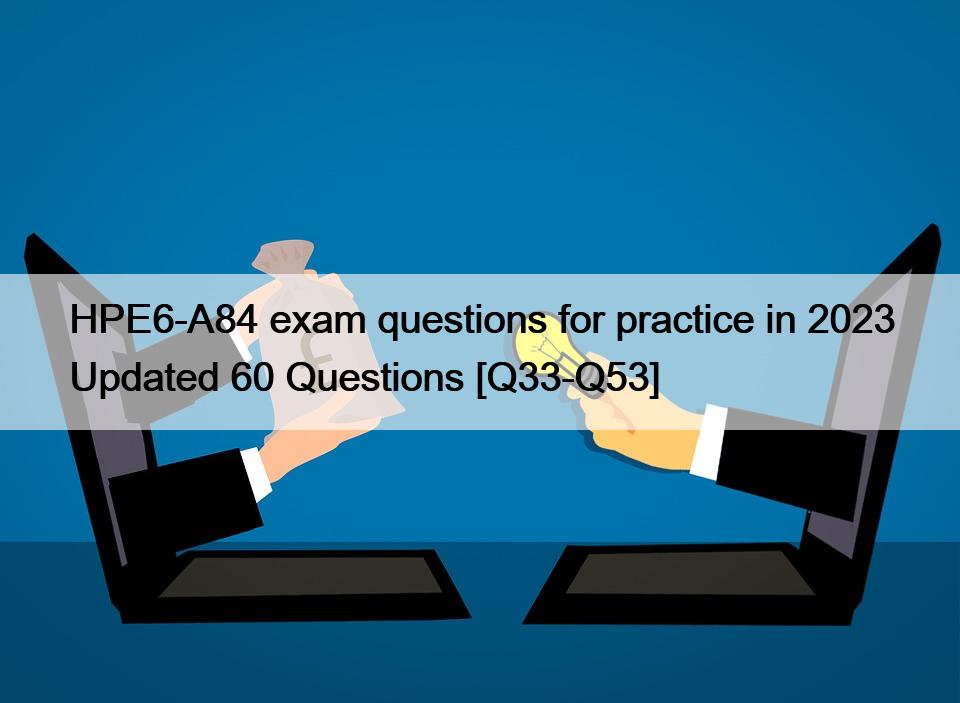|
Free Exams Dumps Materials https://exams.dumpsmaterials.com/2023/11/05/hpe6-a84-exam-questions-for-practice-in-2023-updated-60-questions-q33-q53/ Export date: Thu Nov 21 9:37:46 2024 / +0000 GMT |
HPE6-A84 exam questions for practice in 2023 Updated 60 Questions [Q33-Q53] HPE6-A84 exam questions for practice in 2023 Updated 60 Questions Updated Nov-2023 Premium HPE6-A84 Exam Engine pdf - Download Free Updated 60 Questions HPE6-A84 exam covers a wide range of topics related to network security and Aruba technologies, including network access control, secure network design, wireless security, firewall technologies, VPN technologies, and more. HPE6-A84 exam is designed to be comprehensive and challenging, and is intended to test the knowledge and skills of network security professionals in a variety of real-world scenarios. HPE6-A84 exam consists of 60 multiple-choice questions, and candidates are given 90 minutes to complete the exam. To become an Aruba Certified Network Security Expert, candidates must pass the HPE6-A84 exam. HPE6-A84 exam is designed to test the candidate's understanding of Aruba's network security solutions, including ClearPass Policy Manager, AirWave, and Aruba's wireless LANs. Additionally, the exam covers topics such as network security policy design, security risk assessments, and regulatory compliance.
Authentic HPE6-A84 Dumps With 100% Passing Rate Practice Tests Dumps: https://www.dumpsmaterials.com/HPE6-A84-real-torrent.html 1 |
Links:
|
|
Post date: 2023-11-05 16:41:47 Post date GMT: 2023-11-05 16:41:47 Post modified date: 2023-11-05 16:41:47 Post modified date GMT: 2023-11-05 16:41:47 |
|
Export date: Thu Nov 21 9:37:46 2024 / +0000 GMT This page was exported from Free Exams Dumps Materials [ http://exams.dumpsmaterials.com ] |